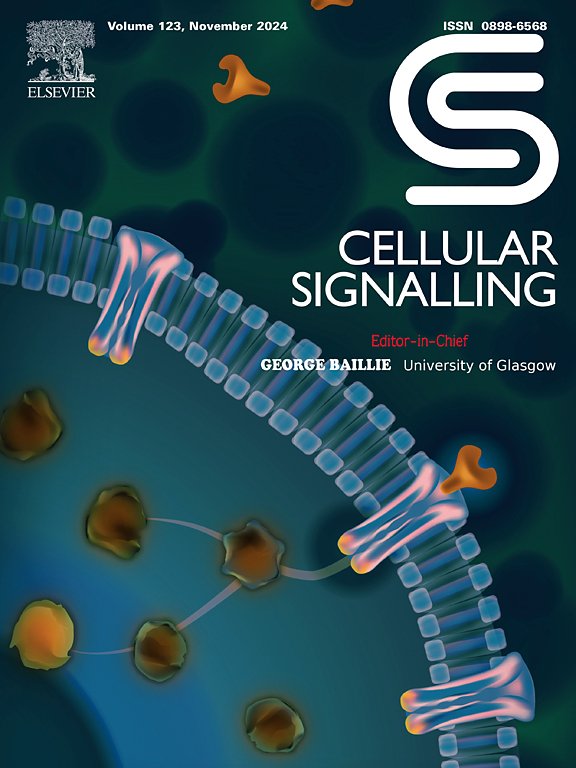Epigenetic upregulation of FGF2 promotes glioblastoma progression by enhancing the Warburg effect
IF 3.7
2区 生物学
Q2 CELL BIOLOGY
引用次数: 0
Abstract
Glioblastoma (GBM), the most common primary intracranial malignancy, remains poorly understood in terms of its underlying etiology. Although fibroblast growth factor 2 (FGF2) is highly expressed in GBM, its epigenetic regulation and functional contributions to disease progression are incompletely defined. Here, through integrated bioinformatics analysis, real-time PCR, and western blot, we demonstrate that FGF2 expression is significantly upregulated in GBM patient-derived tissues and cells. Functional assays revealed that silencing FGF2 markedly suppressed GBM cell proliferation and migration in vitro. Mechanistically, we identified cyclic AMP response element-binding protein 1 (CREB1) as a critical transcription factor regulating FGF2 transcription through binding to cAMP response elements (CREs) within the FGF2 gene's silencer I and core promoter regions. Intriguingly, these CREs exerted opposing regulatory effects: hypermethylation of the silencer I and hypomethylation of the core promoter favored preferential CREB1 binding to the core promoter in GBM cells. CREB1 recruitment of histone acetyltransferase CBP further promoted histone H3K27 acetylation and enhanced chromatin accessibility at the FGF2 core promoter, thereby driving transcriptional activation. Additionally, FGF2 has been shown to significantly enhance glycolysis and lactate production in GBM cells, fueling malignant growth. Collectively, our findings highlight the CREB1/FGF2/lactate axis as a promising therapeutic target for GBM treatment.
表观遗传上调FGF2通过增强Warburg效应促进胶质母细胞瘤的进展。
胶质母细胞瘤(GBM)是最常见的原发性颅内恶性肿瘤,其潜在病因尚不清楚。尽管成纤维细胞生长因子2 (FGF2)在GBM中高表达,但其表观遗传调控和对疾病进展的功能贡献尚不完全明确。通过综合生物信息学分析、实时荧光定量PCR和western blot,我们发现FGF2在GBM患者来源的组织和细胞中表达显著上调。功能分析显示,沉默FGF2可显著抑制GBM细胞的体外增殖和迁移。在机制上,我们发现环AMP反应元件结合蛋白1 (CREB1)是一个关键的转录因子,通过结合FGF2基因沉默子I和核心启动子区域内的cAMP反应元件(CREs)来调节FGF2的转录。有趣的是,这些cre发挥了相反的调节作用:在GBM细胞中,沉默子I的超甲基化和核心启动子的低甲基化有利于CREB1优先与核心启动子结合。CREB1募集组蛋白乙酰转移酶CBP进一步促进组蛋白H3K27乙酰化,增强FGF2核心启动子染色质可及性,从而驱动转录激活。此外,FGF2已被证明显著增强GBM细胞的糖酵解和乳酸生成,促进恶性生长。总的来说,我们的研究结果强调了CREB1/FGF2/乳酸轴是GBM治疗的一个有希望的治疗靶点。
本文章由计算机程序翻译,如有差异,请以英文原文为准。
求助全文
约1分钟内获得全文
求助全文
来源期刊

Cellular signalling
生物-细胞生物学
CiteScore
8.40
自引率
0.00%
发文量
250
审稿时长
27 days
期刊介绍:
Cellular Signalling publishes original research describing fundamental and clinical findings on the mechanisms, actions and structural components of cellular signalling systems in vitro and in vivo.
Cellular Signalling aims at full length research papers defining signalling systems ranging from microorganisms to cells, tissues and higher organisms.
 求助内容:
求助内容: 应助结果提醒方式:
应助结果提醒方式:


